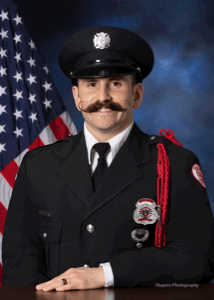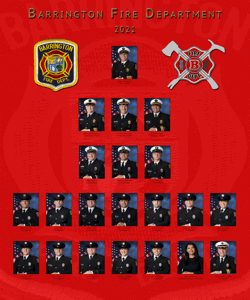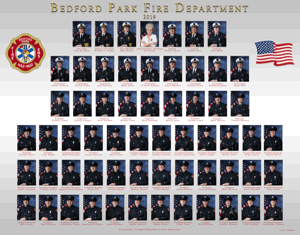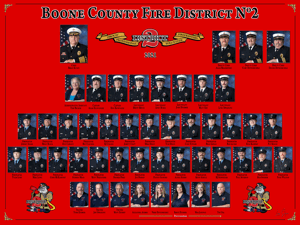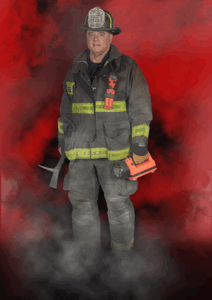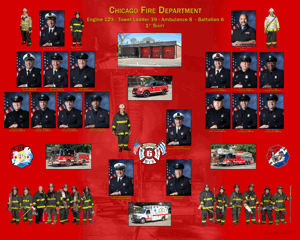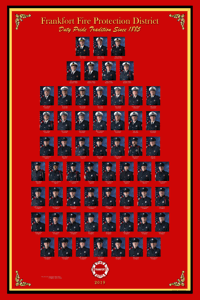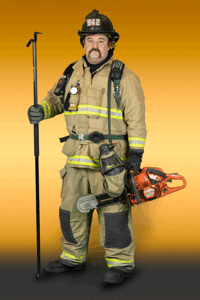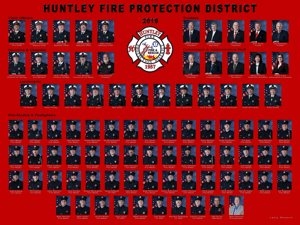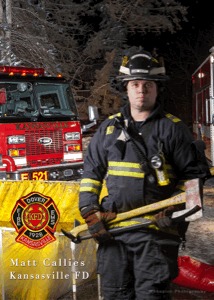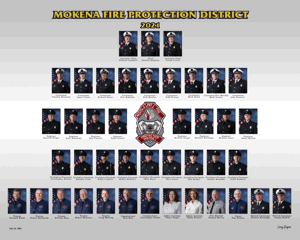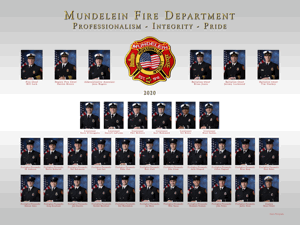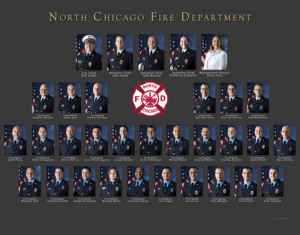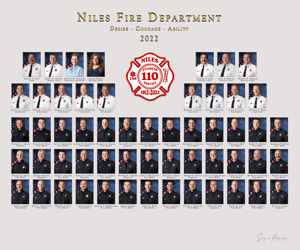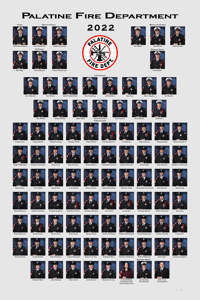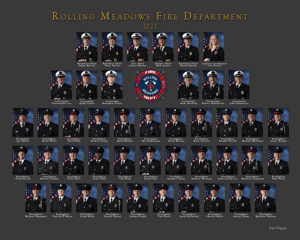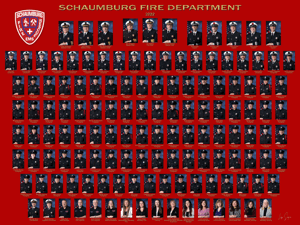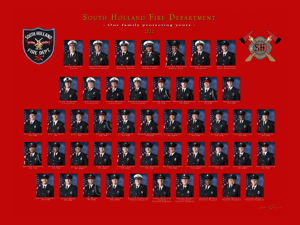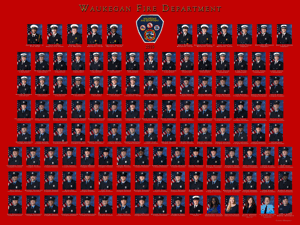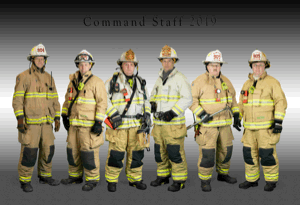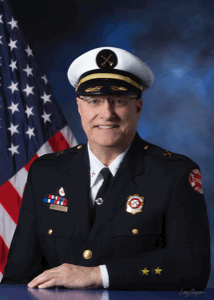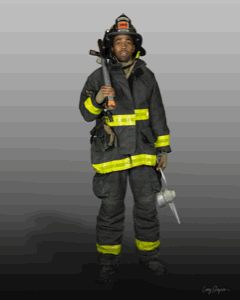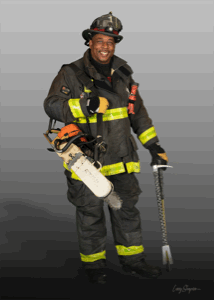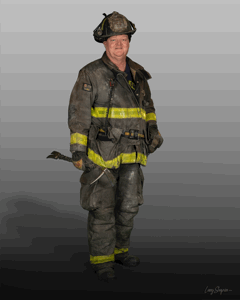This post is from Phil Stenholm:
Today (January 9th) is the 87th anniversary of one of the most significant fires in Evanston’s history. It’s significant because it involved a well-known landmark, it incurred the highest dollar-loss of any fire in Evanston’s history up until that point in time, and it called attention to deficiencies in the Fire Department previously ignored that led to a substantial upgrading of the EFD within a matter of months.
At this particular point in time (January 9, 1927), the Evanston Fire Department had 61 members, including the Chief and two 30-man platoons (working 24 hours on & 24 hours off, with a minimum staffing of 30 men per shift November-March, and a minimum of 25 men per shift March-November when each company could run “one man short”). The manpower was further divided into five companies (three engine companies and two truck companies) located in three fire stations (one engine company in each of the three stations, with both truck companies at Station # 1). There was also one firefighter on each platoon who served as the Chief’s chauffeur and administrative assistant.
Engine Co. 1 operated with a 1917 Seagrave 750 GPM TCP, Engine Co. 2 ran as a two-piece company (1906 American LaFrance 700 GPM Metropolitan steamer pulled by a 1918 Seagrave Model “K” one-axle tractor and a 1917 Seagrave 300 GPM chemical & hose booster pumper), and Engine Co. 3 ran with a 1917 Seagrave 300 GPM chemical & hose booster-pumper (the twin of Engine Co. 2?s hose truck), providing Evanston an aggregate potential GPM flow of 2,050 among the three engine companies.
Truck 1 was a 1924 Seagrave 85-ft TDA (the EFD’s only aerial-ladder truck at the time), and Truck 2 was a 1917 Seagrave Model “E” city service truck equipped with a variety of rescue gear (including a “life net”), truck tools, and ground-based ladders, the tallest of which was a 55-ft extension ladder that required four men to raise. Truck Co. 1 was first-due to alarms east of Asbury (covering an area that included the downtown Davis Street “high-value” district, the Northwestern University campus, all of the city’s hotels, both hospitals, and most-all of Evanston’s churches and apartments buildings), and Truck Co. 2 was first-due to alarms west of Asbury Ave. (In its mosr recent inspection of the Evanston Fire Department, the National Board of Fire Insurance Underwriters had recommended a fourth fire station be built at Dempster & Dodge, with a new engine company–Engine Co. 4–to be organized at the new station, and with Truck Co. 2 to be relocated from Station # 1 to the new Station # 4).
There was also one reserve apparatus (Engine 4 – the 1911 Robinson “Jumbo” 750 GPM TCP that was Evanston’s first automobile fire engine) at Fire Station #1 that was staffed by an off-duty crew in the case of a large fire where all five front-line companies were working at the scene. (With the exception of the 1906 American LaFrance steamer–which was converted to a so-called “travtorized-steamer,” all of the Evanston Fire Department’s horse-drawn apparatus (including an aerial-ladder truck, a steamer, a combination truck, a chemical engine, and two hose carts) had been junked in February 1918 when the EFD was fully motorized, leaving the EFD with just the one reserve rig).
At 1 PM on Sunday afternoon, January 9, 1927, boy scout LeRoy Kreutzer (who was also a “junior reporter “ for the Evanston News-Index) noticed smoke wafting from the Boltwood Intermediate School at the southeast corner of Dempster & Elmwood. Boltwood School served as Evanston’s lone junior high school at the time, as well as the headquarters of the Evanston chapter of the Boy Scouts of America. The facility had previously served as Evanston Township High School for forty years, until the new ETHS campus was opened at Church & Dodge in 1924.
Kreutzer pulled fire alarm box # 313 at Dempster & Elmwood, and then ran around the corner and alerted EFD Chief Albert Hofstetter, who was taking a nap at his residence at 1228 Sherman Ave. Evanston fire fighters arrived and quickly determined that the fire was confined to a manual arts classroom in the basement. Although the fire was contained to the one room, EFD engine companies had difficulty getting to the fire due to heavy smoke throughout the interior of the school. Despite the heavy smoke conditions, a monkey and several white mice located in the science lab were rescued.
The truck companies attempted to ventilate the heat and smoke from the structure, but the efforts failed as a strong wind entered the building and fanned the fire. The flames flashed-over and swept past fire fighters, traveling up an interior stairway, before blowing out through the second-floor windows. A “General Alarm” was sounded, as all on duty AND off-duty EFD firemen were ordered to the scene. The blaze was out of control, with the very real possibility that the flames could jump over the alley and threaten homes (including Chief Hofstetter’s house) located east of the school. After two firemen barely escaped when part of the roof collapsed, Chief Hofstetter ordered all personnel inside to evacuate, and the fight went defensive.
With the EFD seemingly helpless to stop the firestorm, Chief Hofstetter requested assistance from the Chicago Fire Department. The Chicago F. D. had responded into Evanston on numerous occasions in the past, in each case assigning no more than two engine companies. However, this fire was larger and more threatening than any other previous Evanston blaze, and the Chicago Fire Department (with Chief Jerry McAuliffe in command at the scene) ended up sending eight engine companies, two truck companies (both responding with aerial-ladders), and a water tower.
At least two traffic collisions were blamed on the chaos resulting from so many fire trucks and spectators pouring into the neighborhood. At the height of the blaze, engines were pumping from various hydrants located within a six square-block area. Reportedly 20,000 spectators (about 1/3 of Evanston’s total population at the time) gathered to watch the conflagration. Off-duty Evanston Police officers were summoned to help with traffic and crowd control.
Thanks to the great assistance provided by the Chicago Fire Department, the fire was brought under control. Although Boltwood School was gutted, the homes and businesses across the alley were saved. Three fire fighters suffered minor injuries. Damage was estimated at $308,500, by far the highest-loss recorded in an Evanston fire up to that point in time. Two new junior high schools were constructed to replace Boltwood, Nichols in South Evanston, and Haven in North Evanston (with Haven initially being K-8, as it also replaced Cranston Elementary School).
In the aftermath of the Boltwood fire, the competence of the Evanston Fire Department was called into question. The City Council conducted an investigation, and quickly discovered some things they probably should have already known… that the EFD of 1927 was simply a small town fire department operating in a city of 60,000 people… that it was substantially undermanned and under-equipped… and that therefore a disaster like that of the Boltwood School fire was inevitable.
Evanston voters were presented with a $75,000 bond issue in the city election of April 5, 1927. The bond issue passed, resulting in many improvements in the EFD:
* 23 additional firemen were hired, bringing the force up to 84, with 41 men on each platoon and with a minimum staffing of 41 per shift November-March and a minimum of 34 men on duty per shift March-November (when each company could run one man short per shift); Note that present shift staffing in the Evanston Fire Department is back to where it was the day of the Boltwood School fire, the main difference being that the EFD did not provide ambulance service in 1927;
* Two new engine companies were organized, bringing the total number of companies in service to seven (five engine companies and two truck companies);
* A portable deluge nozzle and two new 1000 GPM pumpers with 50-gallon booster tanks were purchased;
* A fourth fire station was constructed to cover southwest Evanston, although it was built at 1817 Washington Street (not at Dempster & Dodge as had been recommended by the NBFU), and Truck Co. 2 was not moved to Station # 4, instead remaining at Station # 1 for another 28 years before being relocated to rebuilt Station # 2 at 702 Madison Street in southeast Evanston in March 1955;
* A “Fire Prevention Bureau” was established.
Engine Co. 4 (later known as “Engine Co. 24”) was organized at Fire Station # 2 at 750 Chicago Avenue in November 1927. Ten men were assigned to Engine Co. 4 (five on each platoon). The company was provided with equipment and apparatus (the tractorized-steamer and the chemical & hose booster-pumper) formerly used by Engine Co. 2. Patrick Gaynor (formerly captain of Engine Co. 2) was the first captain of Engine Co. 4. The company moved into brand-new Station # 4 at 1817 Washington Street on December 30, 1927. To help dedicate the new facility, Capt. Gaynor staged a professional boxing match on the apparatus floor of the firehouse. It was the first Evanston fire station designed and built especially for automobile apparatus (a garage rather than a barn), with a kitchen and a dining room part of the original blueprint.
Engine Co. 5 (later known as “Engine Co. 25”) was organized at Fire Station # 1 at 807 Grove Steeet in November 1927, on the same day that Engine Co. 4 was organized at Fire Station # 2. Twelve men were assigned to Engine Co. 5 (six men on each platoon) . This company was assigned one of the new Seagrave “Standard” 1000 GPM pumpers (the other was assigned to Engine Co. 2), and was the designated “high-value district” (downtown Evanston) engine company for many years until it was relocated to new Fire Station # 5 in nNortwest Evanston in 1955. Henry Tesnow was the first captain. Capt. John E. Mersch was initially assigned (on paper) as the commander of Engine Co. 5, but he suffered a disabling leg injury in September 1927 when the police ambulance in which he was riding was hit broadside by a bus while he and two police officers were en route with the inhalator to aid a drowning victim at Greenwood Street Beach. In May 1928, after he was discharged from the hospital, and after it was determined that he could no longer work as a fireman, Capt. Mersch was appointed to the newly-created position of “Fire Prevention Inspector.” He was promoted to the rank of Assistant Chief in 1932, and he would continue to serve as both Fire Prevention Inspector and Chief of the Fire Prevention Bureau until his death at the age of 67 in October 1950 (45 years of continuous service with the EFD).
The “Fire Prevention Bureau” (FPB) was established (by ordinance) on February 9, 1929. The ordinance assigned the following duties and responsibilities to the FPB:
1. Prevent fires through education;
2. Regulate the storage and use of explosives and flammables;
3. Regulate installation and maintenance of automatic fire alarms and extinguishers;
4. Ensure maintenance and regulation of fire escapes;
5. Ensure means and adequacy of exit in case of fire involving:
a. factories
b. schools
c. hotels
d. lodging houses & rooming houses
e. asylums and sanitariums
f. hospitals
g. churches
h. assembly halls
I. theatres
j. amphitheatres
k. any other establishment where persons work and/or congregate;
6. Investigate the cause, origin, and circumstance of fires.
